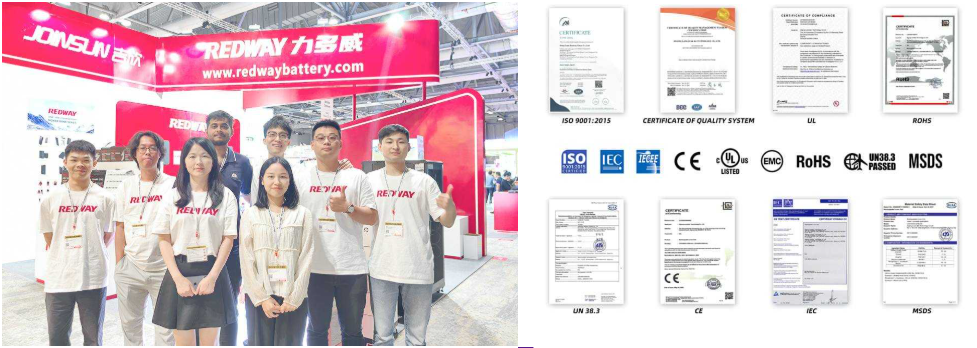Cylindrical cells, like the popular 18650 format, offer high energy density and durability, making them ideal for laptops and power tools. Pouch cells provide design flexibility and lightweight construction, suiting applications such as smartphones and portable electronics. Consider the pros and cons to make an informed decision for your lithium-ion battery needs.
Understanding the Essence: Cylindrical Cells
Discover the essence of cylindrical cells, the popular battery cells with a cylindrical shape like the 18650 format. Widely used in laptops, power tools, and electric vehicles, cylindrical cells offer high energy density, durability, and a well-established manufacturing process. Explore the significance of cylindrical cells in powering our modern devices and vehicles.
High Energy Density:
- Cylindrical cells are known for their ability to store a significant amount of energy in a compact size.
- This high energy density allows devices powered by cylindrical cells to operate for longer durations without frequent recharging.
Durability:
- Cylindrical cells are designed to withstand demanding conditions and provide reliable power output.
- Their robust construction ensures that they can endure mechanical stress and temperature variations.
Well-Established Manufacturing Process:
- Cylindrical cells, especially the 18650 format, have been manufactured for many years, resulting in a mature and efficient production process.
- This well-established manufacturing process ensures consistent quality and availability of cylindrical cells.
Pouch Cells: Unveiling Versatility and Innovation
Discover the versatility and innovation of pouch cells, the battery cells with a flexible and flat pouch-like structure. Widely used in smartphones, tablets, and portable electronics, pouch cells offer design flexibility, lightweight construction, and the ability to customize battery shapes and sizes. Explore the significance of pouch cells in powering our modern portable devices.
Design Flexibility:
- Pouch cells offer design flexibility, allowing manufacturers to create custom-shaped batteries that can fit specific devices or applications.
- The flat and flexible nature of pouch cells enables them to be integrated into various form factors and accommodate unique design requirements.
Lightweight Construction:
- Pouch cells are known for their lightweight construction, making them ideal for portable devices where weight is a crucial factor.
- The lightweight nature of pouch cells contributes to the overall portability and user-friendliness of devices such as smartphones and tablets.
Customizable Shapes and Sizes:
- Pouch cells can be customized in terms of their shapes and sizes to fit specific devices or applications.
- This customization ability enables manufacturers to optimize the use of available space within devices and achieve efficient power solutions.
Deciphering the Dilemma: Choosing the Optimal Cell Type
Decipher the dilemma of choosing the optimal cell type for your application. Consider factors such as energy density, design flexibility, weight, and form factor when deciding between cylindrical cells and pouch cells. Evaluate the pros and cons of each cell type and align them with the specific needs of your device or system. Make an informed decision to ensure the optimal performance of your battery.
Energy Density:
- Cylindrical cells are known for their high energy density, allowing them to store a significant amount of energy in a compact size.
- Pouch cells, although slightly lower in energy density, still offer a respectable level of energy storage.
Design Flexibility:
- Pouch cells provide greater design flexibility due to their flat and flexible structure, allowing for custom shapes and sizes.
- Cylindrical cells have a more standardized shape, limiting design possibilities to some extent.
Weight and Form Factor:
- Pouch cells are generally lighter in weight compared to cylindrical cells, making them suitable for portable devices where weight is a concern.
- Cylindrical cells, with their more rigid structure, may have limitations in fitting into tight spaces or unique form factors.
Embracing Evolution: The Future of Battery Packaging Technologies
Embrace the evolution of battery packaging technologies and explore the future advancements. Discover innovations like solid-state batteries, advanced thermal management systems, and recyclable materials that are shaping the future of battery packaging. Witness the promising advancements in safety, energy density, and sustainability. Embrace the future of battery packaging technologies to unlock the full potential of batteries.
Solid-State Batteries:
- Solid-state batteries are a promising advancement in battery technology, offering enhanced safety, higher energy density, and longer lifespan compared to traditional lithium-ion batteries.
- The use of solid-state electrolytes eliminates the need for flammable liquid electrolytes, making solid-state batteries inherently safer.
Advanced Thermal Management Systems:
- Efficient thermal management is crucial for maintaining battery performance and preventing overheating.
- Advanced thermal management systems, such as phase change materials and active cooling techniques, ensure optimal temperature control and prolong battery life.
Recyclable Materials:
- The shift towards sustainable practices has led to the exploration of recyclable materials in battery packaging.
- Using recyclable materials not only reduces environmental impact but also allows for the extraction and reuse of valuable resources from spent batteries.

Key Points
Cylindrical vs. pouch cells have some important pros and cons – but the type of cell you ultimately choose will be determined by the application you’ll use it for.
- Since cylindrical cells are widely used and standardized, they offer better manufacturing techniques (which result in a more consistent product) than pouch cells.
- The cylindrical cell is much more resistant to deformation in high-pressure environments than the prismatic pouch cell.
- In comparison with prismatic or pouch lithium batteries, cylindrical lithium batteries are easier to weld.
- Although pouch cells are lightweight, humidity and high temperatures can damage them. In turn, this can lead to shorter lifespans and higher overall costs since more replacements will be necessary.
- In the event of a single cylindrical battery going bad, its impact on the entire pack is relatively small. In contrast, prismatic cells are susceptible to being compromised if one battery fails.
- As a result of better cycling, cylindrical cells are stable, inexpensive, standardized across industries, and they last a long time (thanks to their stability). Prismatic and pouch cells aren’t standardized across industries, making them more costly. Even so, rectangular shapes make good use of limited space, and hard shells can be stacked. A softer pouch cell should not typically be stacked.
- A cylindrical battery radiates heat and controls temperature better than a prismatic battery. There is a lack of effective thermal management in prismatic batteries, which causes them to die faster.
Batteries with prismatic electrodes have very little chemical activity at their edges and corners. Due to their low chemical activity, prismatic batteries’ performance decreases considerably over time. Compared to prismatic batteries, cylindrical batteries last much longer.
The characteristics of cylindrical, prismatic, and pouch cells vary depending on the intended use. Battery packaging technologies are continuously evolving, and these advantages and disadvantages are likely to change as well, including the removal of rare and expensive cobalt from lithium-ion battery designs.
Conclusion
In conclusion, the deliberation between cylindrical and pouch cells transcends a binary paradigm, encompassing a spectrum of considerations and contingencies. By leveraging a holistic understanding of the nuanced differences between these two variants, stakeholders can navigate the complex terrain of battery technologies with confidence and foresight. Whether optimizing performance in automotive propulsion systems, powering cutting-edge consumer electronics, or advancing the frontiers of aerospace engineering, the choice between cylindrical and pouch cells heralds profound implications for technological innovation and sustainable progress.







